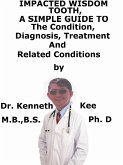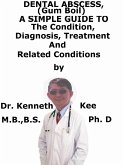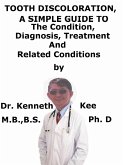Salivary gland stones are a type of salivary gland disorder.
A salivary gland stone (also called salivary duct stone) is a calcified structure that may form inside a salivary gland or duct.
A salivary gland stone can obstruct the flow of saliva from the gland in to the mouth.
This can produce swelling and pain in the gland.
There may be one or multiple salivary gland stones in the affected people.
Most of the salivary gland stones affect the sub-mandibular glands which are sited at the floor of the mouth.
Less often, these stones also affect the parotid glands which are sited on the inside of the cheeks, or the sublingual glands, under the tongue.
These salivary gland stones are formed from calcium and most are lesser than 1 cm in diameter.
About 90% stones are less than 10 mm in size.
Normally these stones are required to be removed even though they can sometimes be removed on their own.
The exact cause is not known.
Any factors contributing to reduced saliva production and thickened saliva may be likely risk factors for formation of salivary stones.
These risk factors are:
1. Dehydration,
2. Poor eating, and
3. Use of certain medications (such as antihistamines), blood pressure drugs, psychiatric drugs, and bladder control drugs.
4. Trauma to the salivary glands may also raise the risk for salivary stones.
When saliva cannot exit a blocked duct, it backs up into the gland, causing pain and swelling of the gland.
Symptoms
1.Difficulty opening the mouth or swallowing
2.Dry mouth
3.Pain in the face or mouth
4.Swelling of the face or neck
The symptoms are normally most noticeable when eating or drinking.
Normally if the salivary gland stone is very small and not blocking the duct then the patient may not realize that he or she has the stones as there are no noticeable symptoms.
Large salivary gland stones may be observed easily when the mouth is wide open.
1.Dull pain and swelling, over the affected gland that may come and go.
2.There may be symptoms of pain and an abscess may be developed in case of severe infection of the gland due to the salivary gland stone.
3.There may be severe pain, particularly after the patient starts eating; in case the salivary gland is completely blocked.
An examination of the jaw region by the doctor or dentist reveals one or more enlarged, tender salivary glands.
The doctor may be able to feel the stone during examination.
X-rays, ultrasound, or CT scan of the face can confirm the diagnosis.
Sialography is a special x-ray test which reveals any abnormalities in the duct or the salivary gland through injection of a dye.
Sialendoscopy may detect the stone and remove it.
Treatment
Sometimes a small stone comes out into the mouth by itself.
Most stones that cause symptoms will not go away unless they come out or are removed.
1.Lots of water and sugar-free lemon drops are used to increase the saliva, which may remove the stone.
2.Massage of the salivary gland with heat may help.
The doctor or dentist may be able to push the stone out of the duct.
3.Gentle Probing may free the stone out of the stuck duct
4.Therapeutic Sialendoscopy: doctors are using a newer and less invasive technique called sialendoscopy to remove salivary gland stones.
In some cases, where the stone is rather large, the stone is broken up first and then the fragments are pulled out
5.Lithotripsy or Shock Wave Treatment uses ultrasound waves so as to break up stones.
6.For larger, harder-to-remove stones, doctors normally make a small incision in the mouth to remove the stone
Some people develop one or more further stones at some later time.
TABLE OF CONTENT
Introduction
Chapter 1 Sialolithiasis
Chapter 2 Causes...
Dieser Download kann aus rechtlichen Gründen nur mit Rechnungsadresse in A, B, CY, CZ, D, DK, EW, E, FIN, F, GR, H, IRL, I, LT, L, LR, M, NL, PL, P, R, S, SLO, SK ausgeliefert werden.









